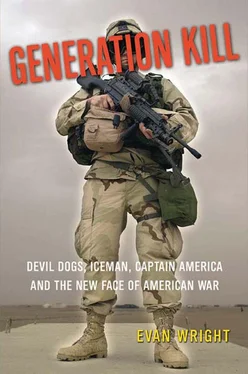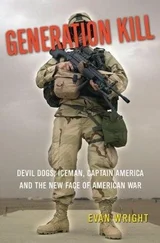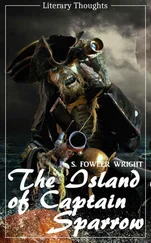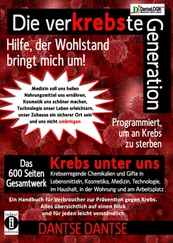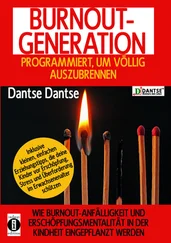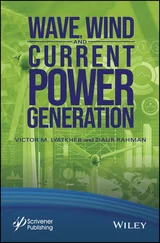When Fick briefs his men on the mission early in the afternoon of the eighth, he tells them, “Once again, we will be at the absolute tippity-tip of the spear, going into the unknown. As soon as we step off, be prepared to engage and destroy targets of opportunity.”
First Recon assembles a mixed force for the mission. Some 120 Marines in its best-equipped platoons will be joined by the ninety reservist Marines in Delta Company. In addition, First Recon will be accompanied by an LAR unit of some 100 Marines in twenty-four vehicles. This unit’s call sign is “War Pig.”
Even though it’s clear to the Marines that on this mission they might be serving more or less as human speed bumps—to slow down a much larger Iraqi advance—the men are quietly excited. After a couple of days of rest, most are sick of being in the camp. It’s a hot, muggy afternoon, nearly 100 degrees in the shade. Flies breeding in Marine latrine trenches inside the camp, as well as on the dead livestock and human corpses outside the perimeter, infest the air. Several Marines in the platoon are suffering from the fever and dysentery that has plagued the unit since leaving Nasiriyah. But spirits are high as they load their vehicles. “I’m scared as fuck,” Lilley tells me. “But I started getting anxious here in this camp. It’s weird. I feel better knowing we’re going to go shoot things again and fuck shit up again.”
“Fuck, yeah!” Person says. “It beats sitting around doing nothing while everybody else gets to have fun attacking Baghdad.”
One thing the Marine Corps can bank on is the low tolerance for boredom among American youth. They need constant stimulation, more than late-night bull sessions, ravioli fiestas and Colbert’s now shredded, dog-eared copy of Juggs can provide. They need more war.
COLBERT’S HUMVEE is ordered into the lead of First Recon’s convoy of about fifty vehicles as we leave the camp near five p.m. on April 8. Colbert stares out his window at the fading light, then mumbles something I can’t quite make out. I ask him to repeat it. “It was nothing,” he says. “I was just thinking about Horsehead. He was one hell of a man. Takes shrapnel to the head and winks out.”
We enter the eastern outskirts of Baghdad, an industrial district of factories and warehouses. The streets are filled with newly liberated Iraqis in the throes of celebration. Though the city center will not fall for another twenty-four hours, freedom fills the air, along with the stench of rotting corpses, uncollected garbage and overflowing sewers. Trash piles and pools of fetid water line the edges of the road. Old women in black kneel in the puddles, gathering in jugs water that their families will boil and drink later.
Smoke pours from bombed, burning buildings on both sides of the road. Ashes fall like snowflakes. Iraqis stream through the haze, hauling random looted goods—ceiling fans, pieces of machinery, fluorescent lights, mismatched filing-cabinet drawers. As we pass by, the looters wave and give us the thumbs-up—thanking the Marines for making all this possible. Some stand in clusters, chanting the words everyone in Iraq now uses to hail the American liberators, “Bush! Bush! Bush!”
The bedlam continues for about ten kilometers. Explosions from the American assault now under way in the city center boom steadily. Kids crawl around twisted, blown-up Iraqi tanks by the road, playing on them or gathering scrap.
Hundreds, if not thousands, of American military vehicles stream past us going south. First Recon’s convoy is about the only unit headed north.
We roll into open mudflats and link up with the twenty-four LAVs of First LAR Battalion’s Charlie Company, call sign War Pig. With their eight wheels and upside-down bathtub shape, LAVs are among the strangest-looking war machines in the American arsenal. Designed to swim on the surface of the ocean as well as cruise on land, they have small propellers protruding from their rears, punctuating the oddness of their appearance. Because of their advanced optics and the devastating firepower, derived from the Bushmaster rapid-fire cannon each has mounted on its turret, Iraqis have nicknamed LAVs “the Great Destroyers.”
For the Marines in First Recon, this is the first time they’ve started a mission with an armored escort. “Damn! That’s fucking awesome,” Person says. “We’ve got the Great Destroyers with us.”
“No, the escort is not ‘awesome,’” Colbert says. “This just tells us how bad they’re expecting this to be.”
As we pull out, following War Pig toward the magic line, Colbert’s mood shifts from darkly brooding to grimly cheerful. “Once more into the great good night,” he says in a mock stage voice, then quotes a line from Julius Caesar. “Cry ‘Havoc,’ and let slip the dogs of war.”
Hunched over the wheel, his helmet weighted down with his NVGs, Person says, “Man, when I get home, I’m gonna eat the fuck out of my girlfriend’s pussy.”
“Enemy contact,” Colbert says, passing on word from radio. “LAVs report enemy contact ahead.”
JUST AFTER DARKNESS FALLS, War Pig’s lead LAV reaches the magic line and the Marine checkpoint, where coils of concertina wire block the narrow, asphalt highway. War Pig’s twenty-four LAVs are spaced about fifty meters apart in a single-file line stretching for more than a kilometer. Colbert’s Humvee is directly behind the rear LAV, with First Recon’s vehicles stretched behind his in a line that extends for another two kilometers.
Minutes after the guards at the checkpoint pull the concertina wire aside to let the convoy through, a white pickup truck speeds toward the lead LAV in War Pig. Its crew observes the truck through thermal nightscopes as it comes to within a couple hundred meters of them, executes a screeching 180-degree turn and hauls ass north. Iraqis in the back of the truck open up on the LAVs with AKs. It’s nothing but harassing fire. The Marines guess the truck is acting as a “rabbit vehicle,” trying to entice them into a chase and, they expect, an ambush.
The LAVs hesitate to cross the magic line. According to War Pig’s executive officer, twenty-seven-year-old First Lieutenant William Wennberg, thus far in the war when working with other units they’ve occasionally had to go through red tape in order to get cleared hot to engage enemy forces. They’ve never worked with First Recon’s Ferrando before, whom they refer to by his call sign, Godfather, and are uncertain how he will respond to the appearance of the rabbit vehicle shooting at them on the road.
When War Pig contacts Godfather and tells him about the harassing fire, he immediately clears them hot to pursue. “Godfather was awesome,” Wennberg later says. “Some commanders get so caught up worrying about the politics of being too aggressive—destroying too much property, hurting innocent civilians—that they put your own forces at risk. Godfather told us to do what we needed to do, and it was good to go.”
The LAVs lunge across the magic line in pursuit. Colbert’s vehicle follows directly behind the rear LAV, as reports flow over the radio of the initial enemy contact. Everyone is quiet, waiting for the ambush. It’s so dark inside Colbert’s Humvee I can barely see my hands. I can’t see the LAV through the front windshield ahead of us. I can’t see what’s out my window to the right, other than dim outlines of farm huts along the road in the flat landscape. A strong wind is starting to whip against the side of the vehicle. Above it, all I hear is the rumbling of the Humvee’s diesel.
Colbert calls out to Hasser, who stands in the turret wearing NVGs. “See anything, Walt?”
“Nope,” he shouts down.
“Look alert!” Colbert shouts, his voice cracking slightly.
Читать дальше
